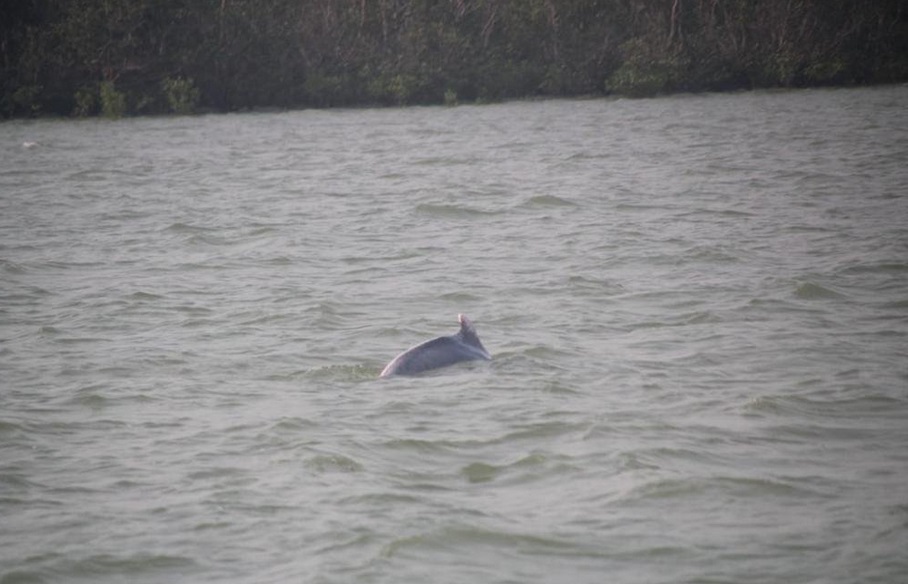Kendrapara: The dolphin population in the state is declining, if we go by the census report. While 259 dolphins were counted this time, their number was 469 in 2018, forest official sources said.
As per the Dolphin and Cetacean Census report, three types of dolphins, including 130 Irrawaddy, 16 Bottlenose and 116 Humpback dolphins were sighted in Odisha. Gahirmatha is home to the state’s largest dolphin population (126). The break-up is: Irrawaddy (14), Bottlenose (14) and Humpback (98). These were spotted during the dolphin census at Gahirmatha Marine Sanctuary within Rajnagar Mangrove (Wildlife) Division, said forest official sources.
After Gahirmatha, Chilika has the largest dolphin population. Of the 113 spotted, all of them were endangered Irrawaddy dolphins. Rushukulya River in Ganjam district comes next with 15 Humpbacks, three Irrawaddys and two Bottlenose dolphins.
During the last census, 307 dolphins were spotted at Gahirmatha, of which as many as 45 were Irrawaddys, 92 Bottlenose dolphins, 108 Humpbacks (souse chinesis) and 62 Humpbacks (sousa plumbea).
If official sources are to be believed, the Bottlenose and Humpback dolphin population is found to be more in Gahirmatha than other areas of the state. More dolphins were found in Gahirmatha than in Chilika due to its bigger areas.
The day-long dolphin survey was carried out on January 19 at six places in the state. They were: Chilika Wildlife Division, Rajnagar Mangrove (Wildlife) Division, Puri Wildlife Division, Berhampur Division, Bhadrak Wildlife Division, and Balasore Wildlife Division.
The census covered important aquatic ecosystems in the state including the Chilika Lake, India’s largest brackish water lagoon, spread over Puri, Khurda and Ganjam districts; the Gahirmatha Marine Sanctuary and its nearby areas within the Bhitarkanika National Park in Kendrapara district; Balasore district and the mouth of the Rushukulya River in Ganjam district.
The drop in the number of dolphins might be due to several reasons, including migration of species from the Chilika Lake and other water bodies to the deep sea due to bad weather during the status survey of dolphins, said Bimal Prasanna Acharya, the DFO of Rajnagar Mangrove (Wildlife) Division.
PNN
